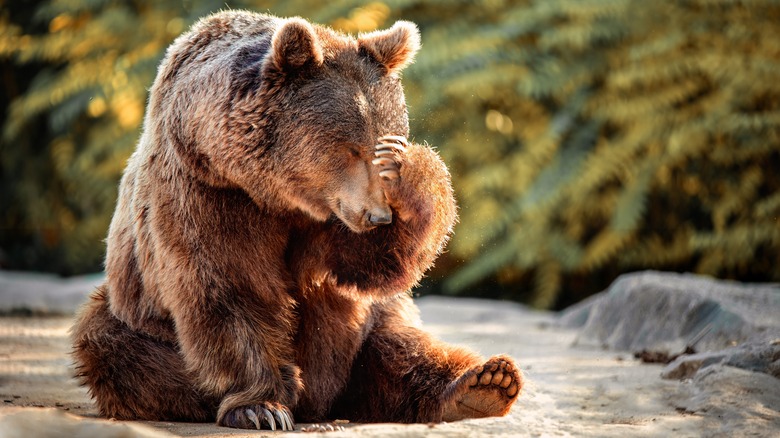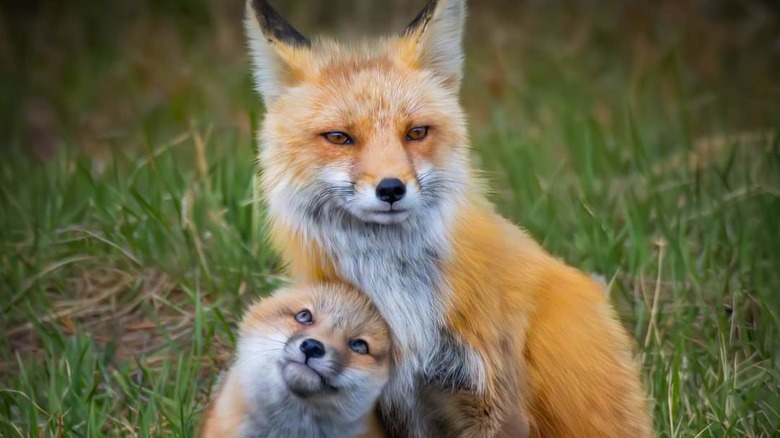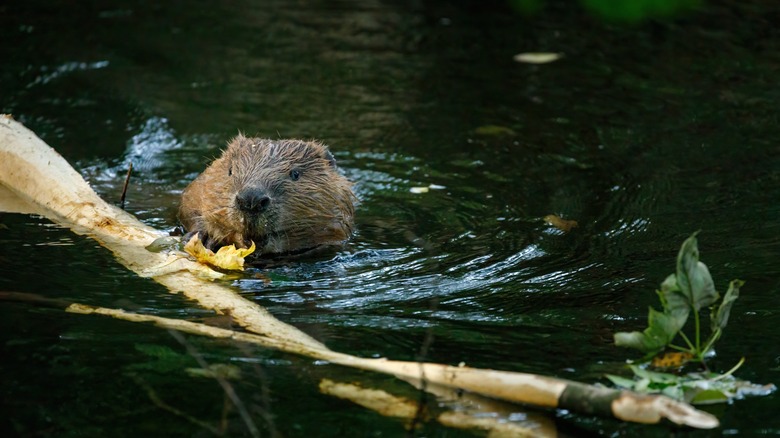The Real Reason Some Wild Animals Are Euthanized While Others Are Not
Plenty of folks are used to the nuisances caused by wildlife. We're thinking black bears in the backyard, raccoons or crows in the trash, critters under the car or deck, and so on. Most of these cases happen near natural habitats, not in city centers. So what if things escalate from annoying to dangerous? Is it ever ok to remorselessly gun down a wild animal if it happens to get lost or hungry?
These are the kinds of questions facing wildlife conservationists, many of whom have come under fire themselves for being too willing to annihilate wildlife in order to control populations, maintain pristine ecosystems, or ward away invasive species, as the Atlantic describes. Our response to wildlife incursions is complicated, especially because ecosystems change naturally over a long period of time as species intermingle and climate changes. There's also no such thing as a habitat undisturbed by human behavior. But even human encroachment, some could argue, is "natural" because we're just another lifeform on Earth.
Some animals, like moose, are too big to quickly go down with a tranquilizer, as Yahoo News cites, so they might be shot before they hurt anyone. Other animals like grizzly bears, per News Channel 11, have too much destructive power and can't be trusted during capture and relocation. And sometimes, per Cornell University, contact with humans is more dangerous for the animal than for us. In the end, each instance requires a case-by-case assessment and needs to be handled with care.
The dangers of habituation
It would be lovely to be able to protect all the animals and plants across the world all the time. Sadly, the reality is not so kind. As Cornell University says, no wildlife professional wants to euthanize an animal. After all, a wildlife professional probably went into their career because they love the natural world. And what's their best advice to the general public for how to protect wildlife from being euthanized? Stay away — 100% of the time. Do not get close to the bison, do not take selfies with the fox, and do not feed the deer. Do not make them used to people, i.e., habituate them. Just go walk your bored dog instead.
In all cases, exposure to humans increases the likelihood of euthanasia. Think about it this way: a raccoon gets your food once, you think it's adorable with its little hands, you leave out more food — food that it can never find in the forest, by the way — and eventually, it's coming all the time. The next time it might bring rabies or go bananas because, you know, it's wild. Then it has to be killed. Same goes for bears. News Channel 11 has a big chart depicting how bears get habituated, which leads to bold behavior that necessitates euthanasia. And if an animal like a deer wanders nearby because it wants food, gets hit by a car but doesn't die, it'll probably have to be put down.
The dangers of translocation
Sometimes animals pose a risk to people regardless of people's involvement, it's true. If a bear rages at you — even if you're strolling in its turf along a hiking trail — options become limited. This was the case of a moose euthanized after being found wandering around Bradley Airport in Connecticut. Emergency Essentials says that moose are generally peaceful, but can become aggressive if stressed. And related to what we said earlier, moose can also become aggressive if you feed them and don't give as much as they want.
The U.S. Department of Agriculture has some clear and strict guidelines for how to deal with wildlife that might pose a threat. In the end, there are really only two options: trap and move them (translocation) or kill them. Translocation, however, is actually illegal in many states, so there might not be any choice but to euthanize. Disease is of special concern, particularly after contact with people. It's generally "not a biologically sound practice" to translocate an animal.
Then there are liability and legal issues, both from property encroachment and physical injury if trying to capture and move an animal, especially in a country as litigious as the U.S. Also, the stress of translocation — which could never be explained to an animal — might ruin an animal for life and make them unable to survive when back in the wild. Ultimately, like with many things, prevention is the best strategy. Stay away as much as you can.


